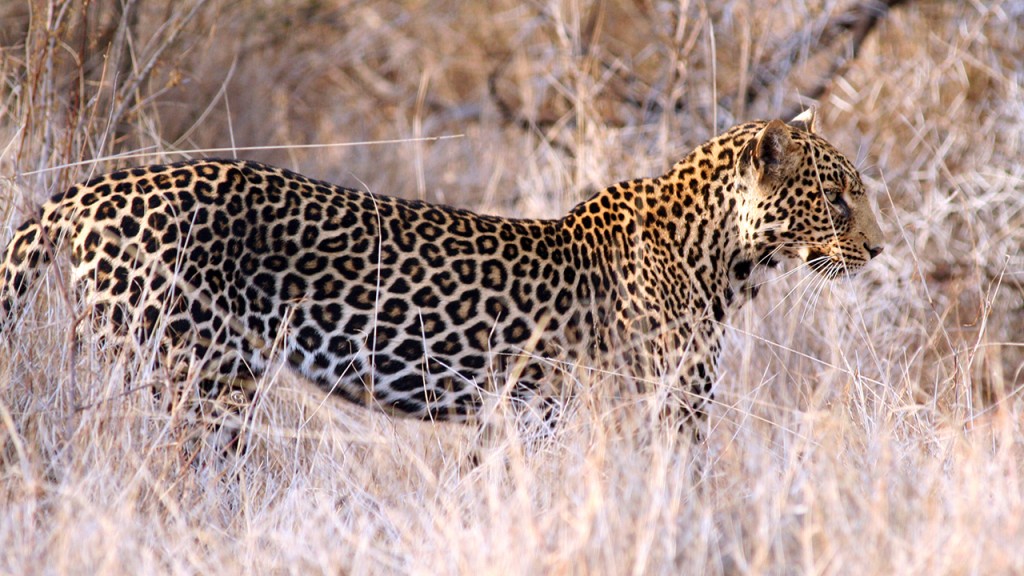“According to African legend, the leopard got its spots when it came too close to its friend Fire and got singed. But these markings also give the leopard almost unparalleled camouflage abilities in the sun-dappled shadows of forests and the bush. With their rosette spots and graceful movements, leopards are among the most elegant of the African predators.”
Leopards of both sexes lead solitary lives on their own territories. Adults stay together mainly when mating, though non-mating pairs also regularly meet and remain together for brief periods… Leopards communicate with a limited range of calls. Their “saw” (also called a “cough” or “rasp”) can be heard up to two miles (3 km) away. Leopards use the saw most frequently at dusk and dawn to alert other leopards that they are near. They also chuff, a kind of a huffing sound, to greet others during friendly encounters, growl, snarl, and hiss during less friendly meetings. Unlike lions, leopards can purr.
Leopards will hunt any time prey is available, though they tend to be the most active at night, in the early morning, and in late afternoon. Hunting is a solitary activity for these cats. Even a female with older cubs will leave her young behind when she hunts.
Read more at the Mpala Live Field Guide.
Take a tour of the wild cats seen around the Mpala Research Center and tune into the African Wildlife Cams to see what’s lurking in the tall grass.
EXPLORE the Complete – African River Wildlife Live Camera Experience



